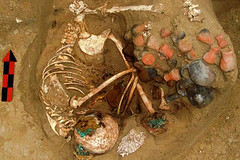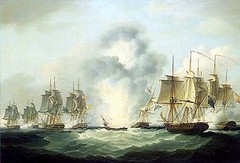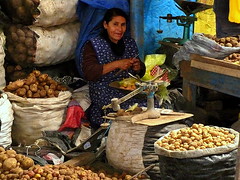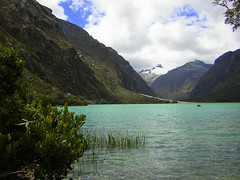At the shores of Lake Umayo, a small lake not 20km from Lake Titicaca, still stand the ancient funerary towers of Sillustani. Thought to be built by Aymara-speaking people called the Colla, they could show the origin of Inca architecture – a westward movement and evolution of Tiahuanaco technology. Whatever the case, the chullpas as they are known, stand out beautifully on the landscape of Puno’s bleak antiplano.
Category: "History"
The Yavarí
The oldest ship on the highest navigable lake in the world, the Yavarí floats on the waters of Titicaca as it has done for nearly 150 years.
Built in England in 1862, it comprises of 2,766 pieces that arrive in Arica – then southern Peru – to begin the long journey by hundreds of mules to Lake Titicaca to be reassembled.
The Yavarí was discovered in a state of disrepair over a decade ago by a British woman from a family with a maritime background named Meriel Larken. On learning the ship’s history she founded The YAVARI Project and charity to restore it. Work is still under way but progressing.
Anticuchos
Originally an Andean cuisine encountered and recorded in history by the first Spanish Conquistadors, Anticuchos are essentially skewered meat of different possible varieties. In Peru, the most common and most tasty of these meats is the heart of a cow. Anticuchos de Corazon are now…
The Asháninkas
The Asháninkas are the indigenous people of the central rainforest. Their native land spans from San Ramon, where the start of the Amazon rainforest clings to the edge of the Andes, eastward to Brasil. Here though, they make up the minority of the population (20-30%) because people from the sierra descended on towns like La Merced to flee terrorism in the 80’s and early 90’s and because numerous colonialists from various parts of Peru arrived to exploit the rainforest.
Las Palmas Airbase
This morning we left for Las Palmas Air Force base, where there was a display and a parade in front of the president.
When we arrived, 2 minutes before it started, there were thousands of people queuing for entry. Luckily for us, Annett’s father is a retired Air Force Commander and we were ushered through the gates and in to a parking space.
Lunch at Cordano
The Plaza de Armas was sealed off today to prevent protesters approaching the presidential palace. Only people wanting access local business and tourists were allowed through into the plaza, so it was strangely quiet when we passed through to go to lunch to celebrate a family event.
We ate at the famous “Cordano” a small bar/restaurant to the right of the Palacio del Gobierno. This bar was frequented by the rich and powerful in Lima’s heyday and is still a favourite for congressmen and local businessmen, as well as more well-informed tourists.
The Chavín culture
A full two-thousand years before the rise of the Inca empire another culture ruled most of the central Andes and spread their influence yet further. The Chavín, from their capital Chavín de Huántar in modern day Ancash, and with their roots in the very first civilisations and city-states in the Americas such as Caral, Sechín and Ventarrón, created what was Peru’s very first empire. In doing so, they instilled an idea in Andean peoples that lasted until the arrival of the Spanish – rule under one government in one society with one common culture is beneficial in this harshest of environments, that better and central organisation would bring better crop yeilds, as well as more free time for monument building, religion and science.
Perú Negra – Black Peru
Afro-Peruvians contribute significantly to the culture of Peru, particularly in music.
Afro-Peruvians make up about 6% of the population and although settled throughout the country along with the spanish conquistadors, can be found mainly along the costal region.









![Part 1: A visit to the men’s prison in San Juan de Lurigancho [Featured]](http://farm4.static.flickr.com/3625/3395439630_49fd35692a_m.jpg)
